There’s something about this kamaage udon recipe that instantly takes me back to my childhood in Hawaii — the smell of dashi, the chewy warmth of fresh noodles, and the cozy feel of dipping each bite into that umami-packed sauce. Growing up, Marugame Udon (which we lovingly still call Marukame) was one of those places we went as a family, again and again. And no matter how many times we went, I always ordered the same thing: kamaage udon.
If you’ve had it before, you know exactly why. It’s simple, comforting, and so satisfying…thick noodles served piping hot, meant to be dipped into a savory soy-based sauce that’s loaded with green onions, sesame seeds, and fresh ginger. They usually served it with a soft-boiled egg and crispy veggie tempura, which totally made the meal for me.
When I moved away for college, there wasn’t a single place nearby that sold udon, not even the dried kind! So I set out on a mission to recreate the foods I missed most. This kamaage udon recipe is the one I turn to when I want something that feels like home. It’s surprisingly easy, takes just minutes to make, and brings back all those nostalgic flavors from my favorite dish at Marugame.
If you’ve been wondering how to eat kamaage udon or want to recreate kamaage udon Marugame-style at home, this is the recipe for you.
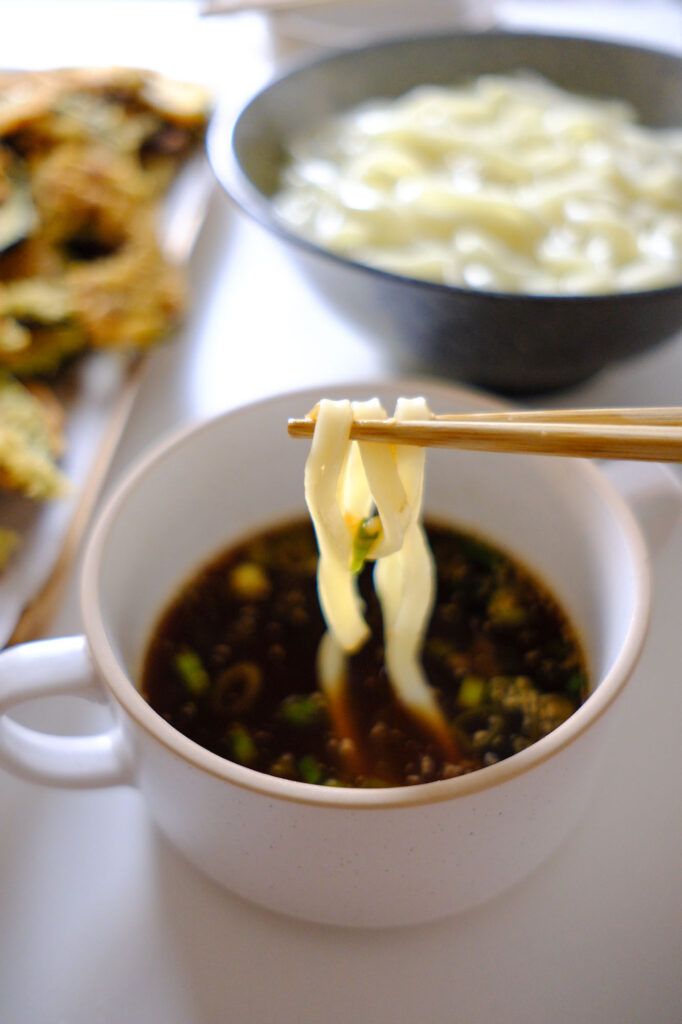
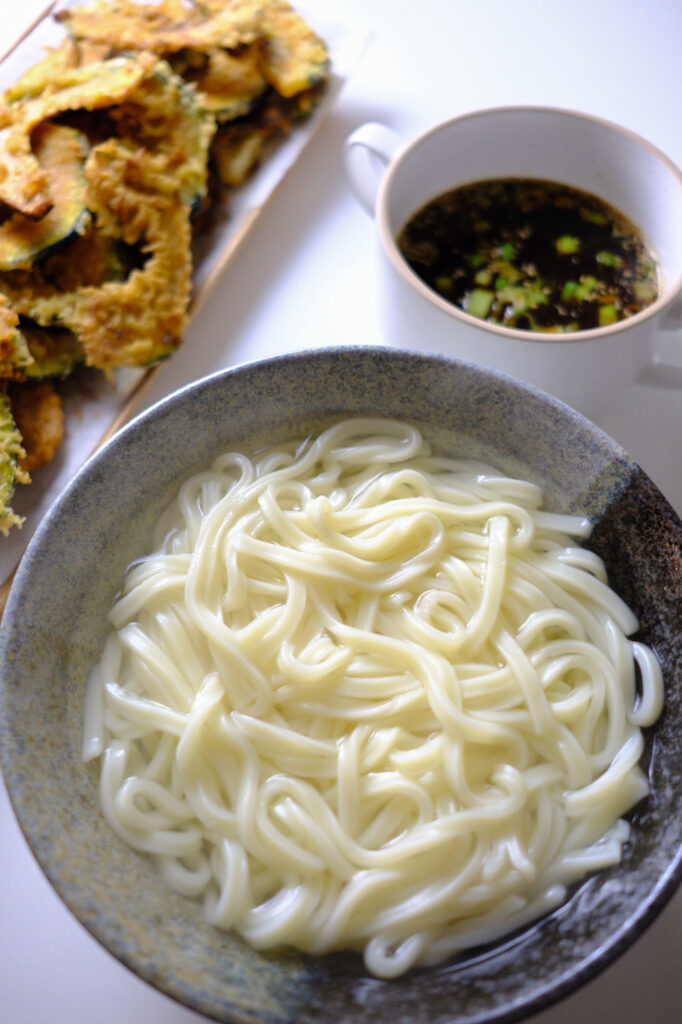
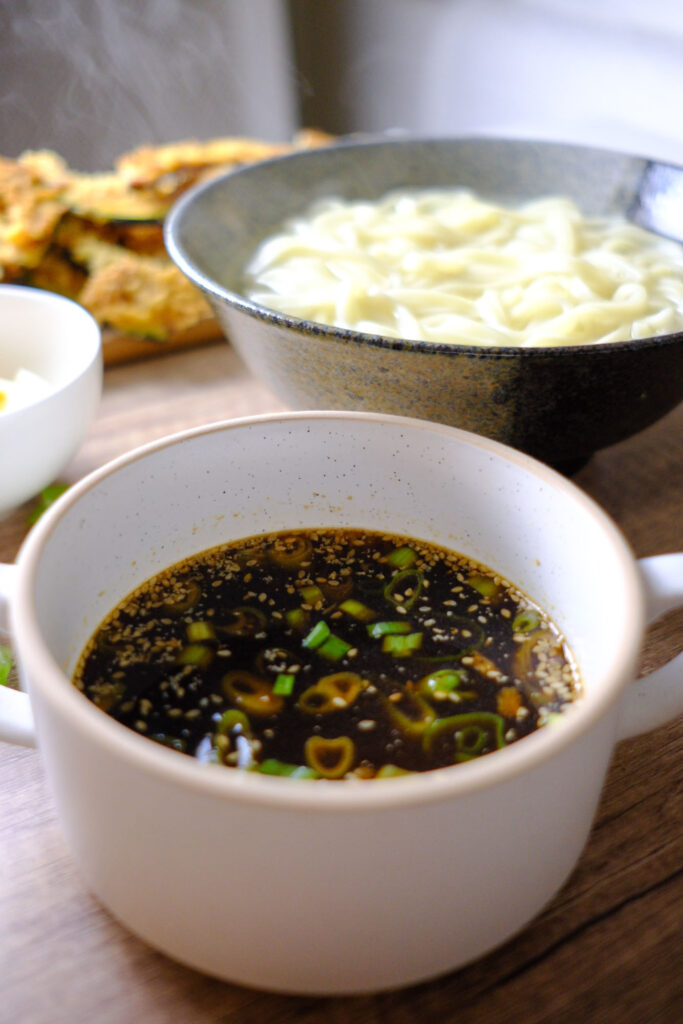
Table of Contents
- Why You’ll Love This Kamaage Udon Recipe
- What Is Kamaage Udon?
- What You’ll Need
- How to Make Kamaage Udon (Step-by-Step)
- How to Eat Kamaage Udon (Like Marugame)
- Frequently Asked Questions About Kamaage Udon
- Kamaage Udon Recipe Card
Why You’ll Love This Kamaage Udon Recipe
I grew up in Hawaii, where eating at Marugame Udon (or “Marukame Udon” as we used to call it) was one of our favorite family traditions. My go-to order? Kamaage Udon — warm noodles served with a soy-based dipping sauce, often with soft eggs and veggie tempura on the side.
After moving to a college town with hardly any Asian restaurants, I missed those flavors so much. So, I set out to recreate my favorite comfort food at home — and honestly? I was shocked at how easy it is to make.
This Marugame-style kamaage udon recipe is:
- Fast – ready in under 15 minutes
- Flavorful – full of umami from soy sauce, dashi, and ginger
- Flexible – add a soft-boiled egg or tempura on the side
- Family-approved – my husband loves it, too!
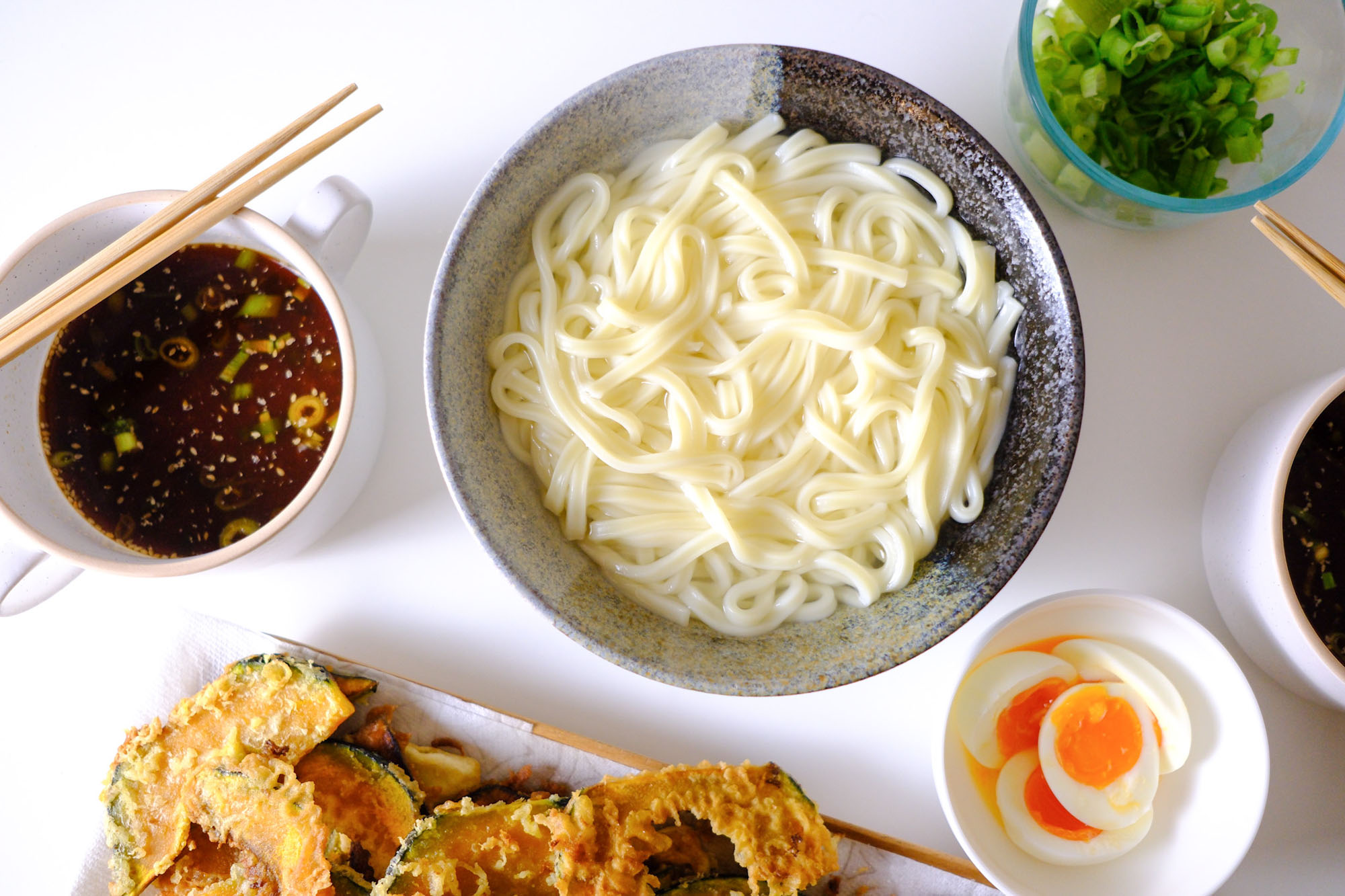
What Is Kamaage Udon?
Kamaage Udon (釜揚げうどん) is a traditional Japanese noodle dish where freshly boiled udon noodles are served in their cooking water and dipped into a flavorful soy-dashi sauce.
It’s not a soup — the magic comes from dipping the hot noodles into a savory sauce that’s loaded with green onion, ginger, sesame seeds, and more.
You’ll often see this style at Marugame Udon restaurants, served in a wooden bowl alongside a small cup of sauce.
What You’ll Need
Here’s everything you need to make this delicious kamaage udon recipe at home:
For the Sauce (1 cup):
- 1 cup (240 ml) dashi stock – homemade or instant
- 4 tbsp soy sauce
- 1.5 tbsp mirin
- 1 tbsp sugar
- 3+ tbsp green onions, thinly sliced
- 1 tbsp sesame seeds, ground or whole
- 2 tsp fresh ginger, grated
For the Noodles:
- Fresh or frozen udon noodles – usually sold in packs at Asian grocery stores (just boil to heat)
- Optional toppings: soft boiled egg, tempura vegetables, or a sprinkle of shichimi togarashi (Japanese chili powder)
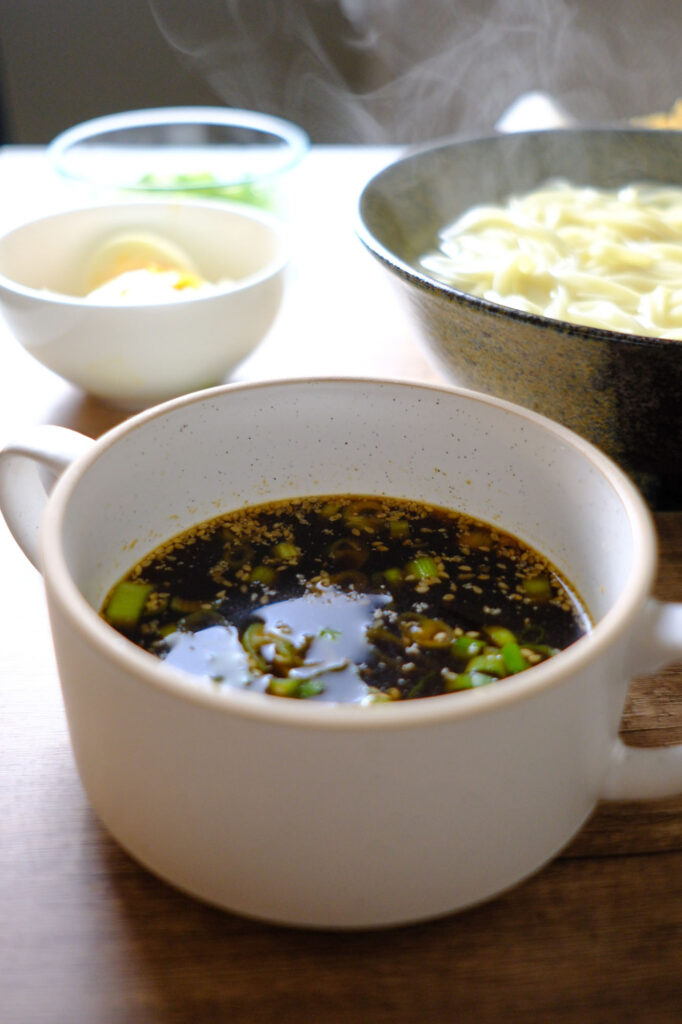
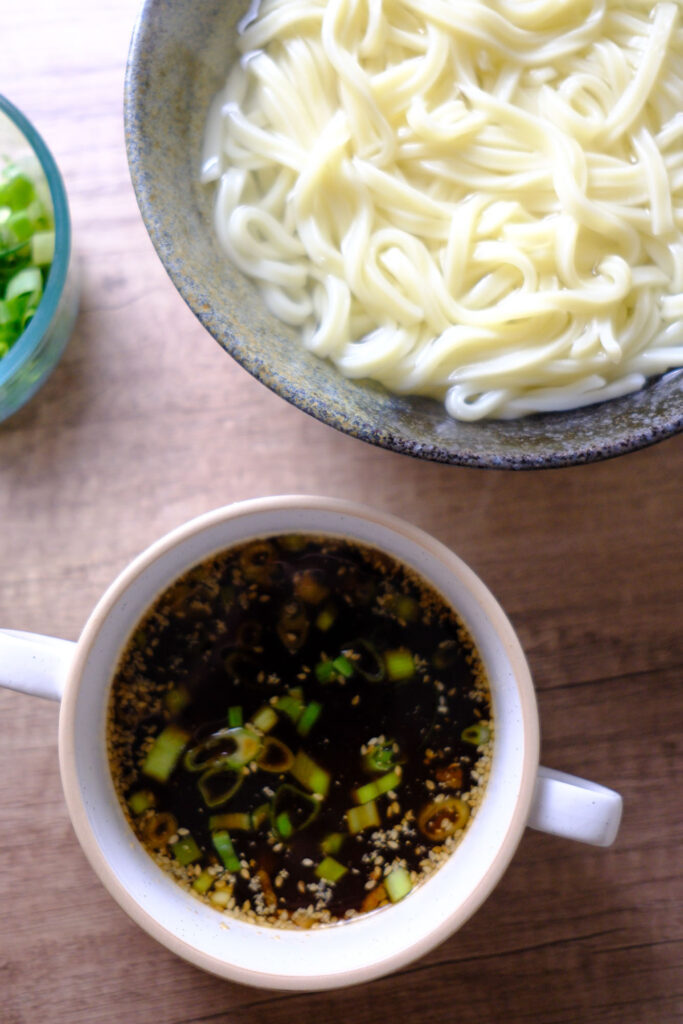
How to Make Kamaage Udon (Step-by-Step)
1. Make the Dipping Sauce
In a small saucepan, bring the dashi stock and soy sauce to a boil. Let it simmer for about 2 minutes.
Remove from heat and stir in the mirin, sugar, green onions, sesame seeds, and grated ginger.
Set aside while you cook the noodles.
Tip: You can serve the sauce warm or at room temperature. I usually keep it warm — it tastes cozier that way!
2. Cook the Udon Noodles
Bring a large pot of water to a boil.
- If using fresh or frozen udon, just defrost and heat in boiling water for a couple minutes.
- If using dried udon, cook according to package instructions (usually 8-10 minutes).
Drain the noodles and serve them hot, ideally in a bowl or pot that retains heat.
3. Serve and Dip
Pour the sauce into small individual dipping bowls.
Serve your steaming hot udon noodles in a bowl or communal wooden dish (if you’re going full Marugame-style), and dip each bite into the sauce as you eat.
How to Eat Kamaage Udon (Like Marugame)
If you’ve ever Googled how to eat kamaage udon, you’re not alone! Here’s the typical way it’s enjoyed in Japan and at Marugame:
- Dip, don’t pour. The sauce is meant to stay separate — not poured over the noodles.
- Eat quickly. The noodles are best hot and chewy.
- Optional add-ons: Add a soft-boiled egg, tempura flakes, or even a scoop of grated daikon for extra texture.
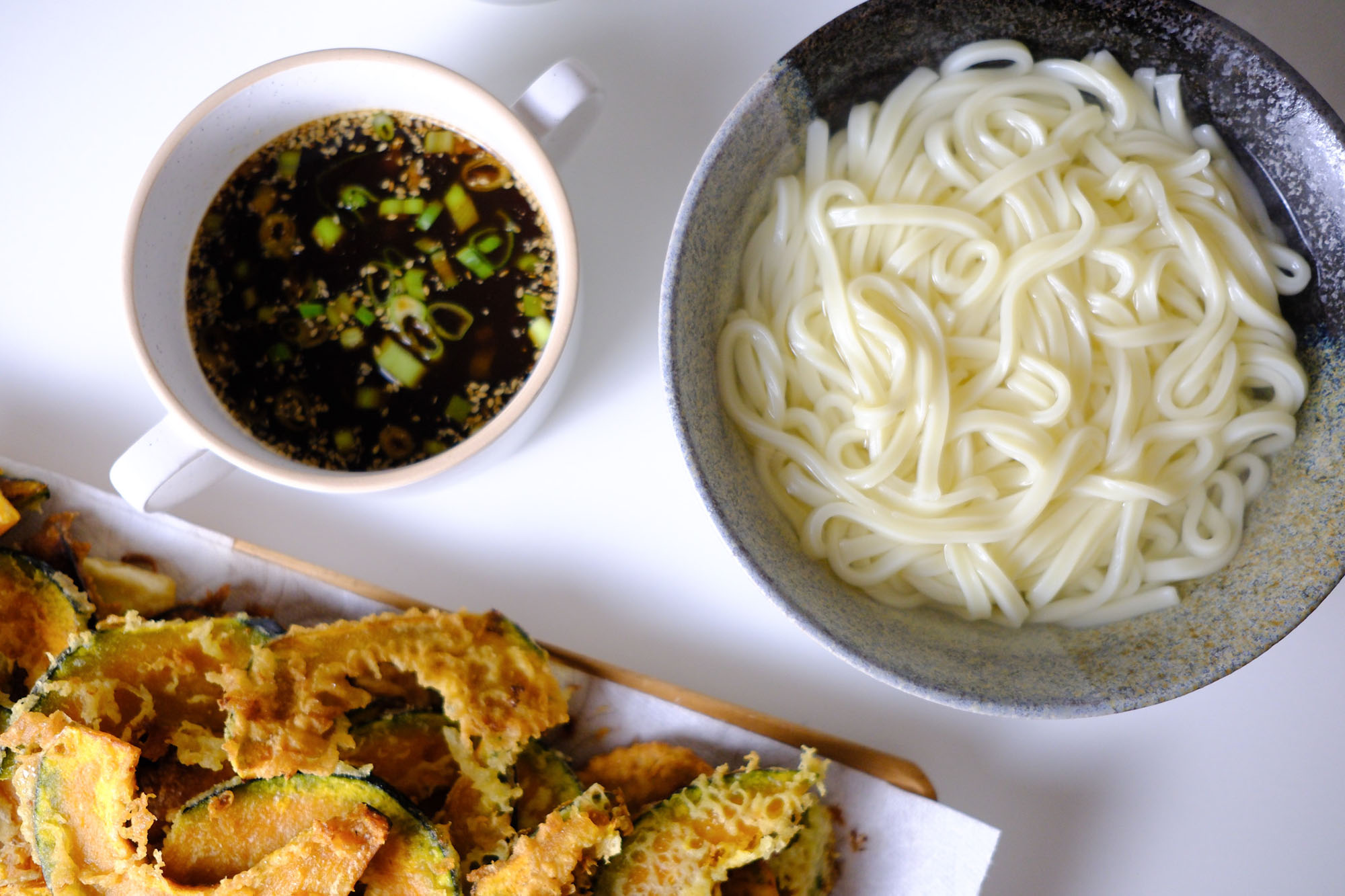
Frequently Asked Questions About Kamaage Udon
Absolutely! I often use dashi powder mixed with hot water when I’m in a rush. You can find it at most Asian markets or online.
Look for sanuki-style udon if possible, which is thick and chewy. Fresh or frozen udon is a great option and much closer in texture to what you’d get at Marugame. I prefer either of those over dried udon.
Yes! You can refrigerate the dipping sauce for up to 3 days. Just reheat gently before serving.
“Kamaage” literally means “taken out of the pot.” The noodles are scooped directly from the boiling water, which gives them that soft, slippery texture we love.
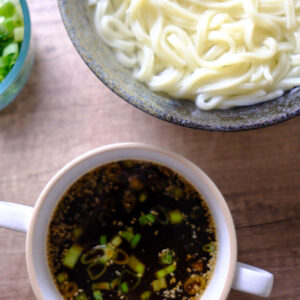
Kamaage Udon Recipe
Ingredients
For the Sauce:
- 1 cup 240 ml dashi stock
- 4 tbsp soy sauce
- 1.5 tbsp mirin
- 1 tbsp sugar
- 3 tbsp green onion more to taste
- 1 tbsp sesame seeds
- 2 tsp grated ginger
For the Udon:
- 2 servings of fresh or frozen udon noodles
Instructions
- In a saucepan, boil dashi and soy sauce for 2 minutes. Remove from heat. Stir in mirin, sugar, green onion, sesame seeds, and ginger.
- Boil water and cook noodles according to package instructions. Drain but do not rinse; keep them hot.
- Pour sauce into small bowls. Serve noodles hot in a bowl or pot. Dip and enjoy!
Notes
- Top with a soft-boiled egg or poached egg
- Serve with veggie tempura or shrimp tempura
- Add a pinch of shichimi togarashi for spice
This kamaage udon recipe has become one of our favorite go-to meals when we’re craving something nostalgic, cozy, and fast. It brings back memories of eating at Marugame in Hawaii with my family and honestly, it feels so good to know I can recreate those flavors at home anytime I want.
If you’ve never tried kamaage udon Marugame-style, I hope this recipe gives you the confidence to try it. You’ll be amazed at how much flavor comes from just a few pantry staples.
Let me know in the comments if you try it, and don’t forget to pair it with some crispy tempura or a jammy egg!

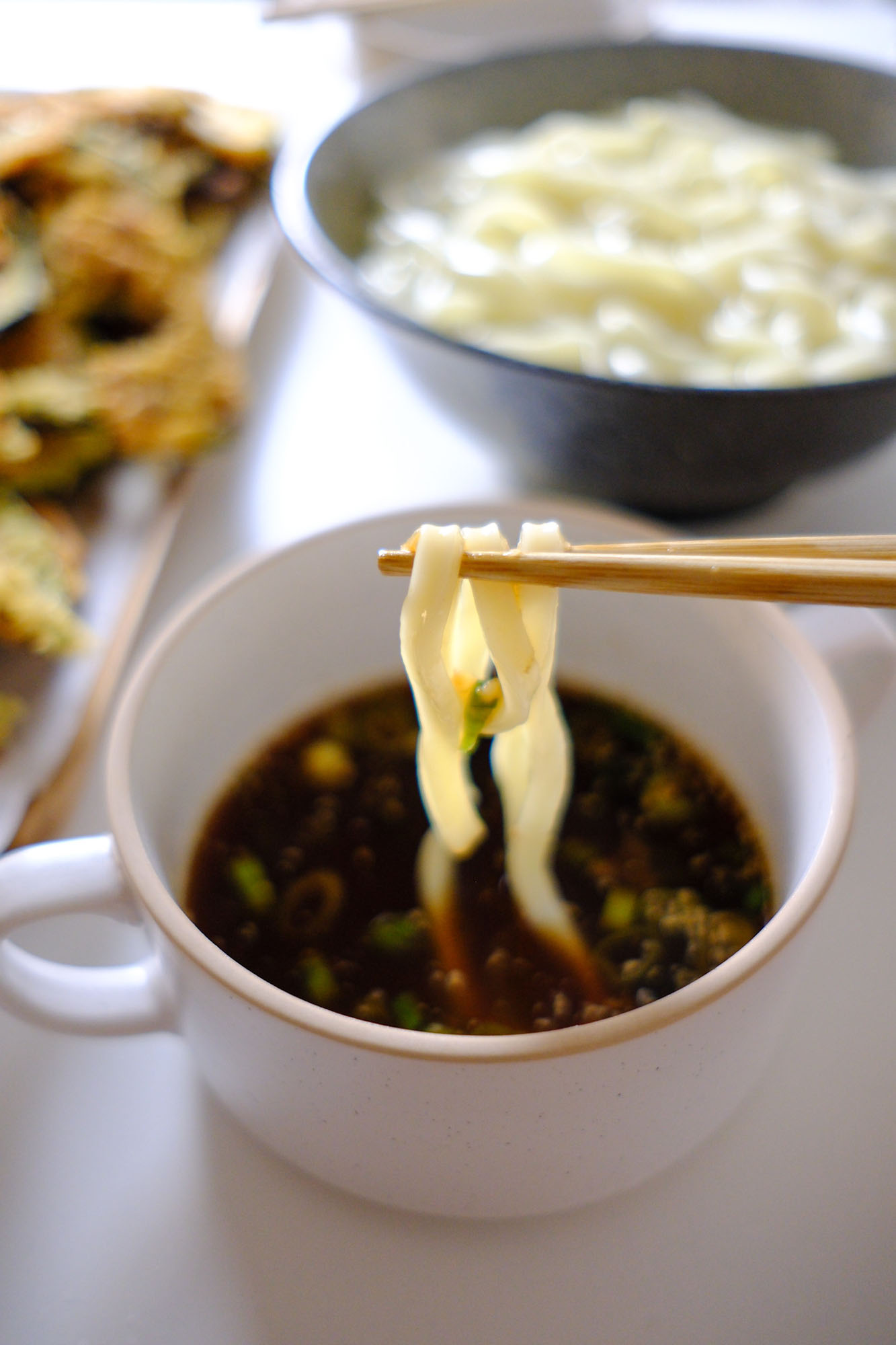

Wow! Tried this recipe and it really does remind me of Marugame’s Kama Age!
I forgot about this udon dish that you dip into a yummy umami sauce. It looks so good!
Looks so yummy, can’t wait to try it!